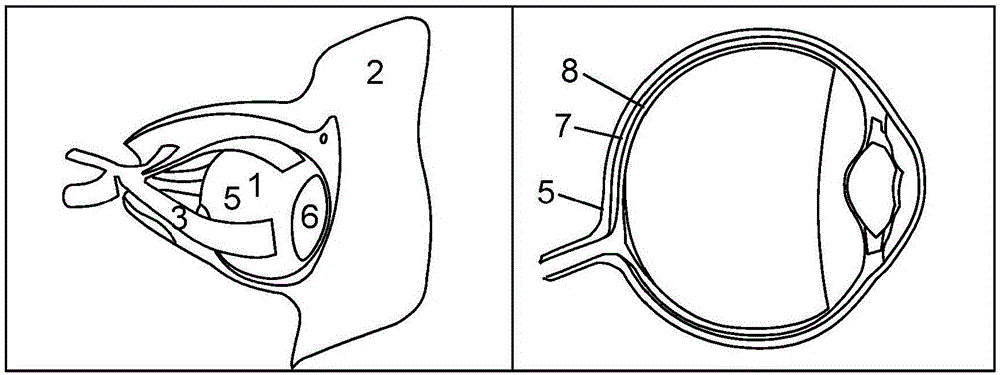A device for a medical treatment of a sclera
A scleral, medical technique used in the field of substance application and radiation systems to address issues such as unsatisfactory treatment methods
- Summary
- Abstract
- Description
- Claims
- Application Information
AI Technical Summary
Problems solved by technology
Method used
Image
Examples
Embodiment 1
[0369] Example 1: Surgery in Rabbit Experiments
[0370] To perform riboflavin / blue light collagen cross-linking, animals were anesthetized by intramuscular injection of ketamine hydrochloride (50 mg / kg body weight; ketamine 5%, Deutschland, Ulm, Germany) together with xylazine hydrochloride (10 mg / kg body weight; kg body weight; Long Peng; Bayer, Leverkusen, Germany). To maintain anesthesia, ketamine hydrochloride (25 mg / kg body weight) and xylazine hydrochloride (5 mg / kg body weight) were injected intramuscularly. Only the right eye underwent treatment, whereas the contralateral untreated eye served as the sole control. In order to avoid damage to the cornea during the operation, use Eye ointment (Gerhardmann, Berlin, Germany) was applied to the left eye. In addition, oxybucaine (conjuncain) was used for local anesthesia of the right eye. After a temporary canthotomy, the conjunctiva is incised at the edge of the heterochromia to open Tenon's space. Subsequently, the...
Embodiment 2
[0371] Example 2: Measurement of Riboflavin Penetration in Scleral Tissue
[0372] Figure 11 The average duration of total tissue penetration of riboflavin in scleral flaps from various species is shown. Penetration time was calculated by applying riboflavin to one side of the scleral tissue flap, and the gross appearance on the opposite side was monitored for maximal fluorescence by fluorescence microscopy. Riboflavin takes approximately 30-40 minutes to penetrate the human sclera compared to the 10-20 minutes it takes riboflavin to penetrate the rabbit sclera. Freeze / thaw scleral tissue was used for this examination; however, results were similar to freshly isolated (ie, non-frozen) tissue.
[0373] Figure 12 Spectral light transmittance characteristics of scleral tissue from various species are shown. Only about 0.5-1% of light (up to 500nm wavelength) penetrates scleral tissue in all species. The application of riboflavin further reduces the transmission at wavele...
Embodiment 3
[0375] Example 3: Results of scleral crosslinking in different species
[0376] Figure 14: Light microscopy of tissue semi-thin sections (0.5 μm thickness, stained with toluidine blue) to compare the size and structure of scleral tissue from various species. Scale bars in A (cynomolgus) sclera are valid for all sclera segments in A and show differences in thickness in the posterior portion of the sclera. B shows tissue sections at higher magnification to reflect structural differences. Histological examination revealed large structural similarities between rabbit and human sclera as well as differences compared to other species. Scale bars in B (macaque) sclera are valid for all sclera segments in B.
[0377] Figure 15 : Comparison of morphological properties of acutely isolated (A) versus frozen / thawed (B-D) sclera tissue with (C and D) and without (A and B) cross-linking treatment. Photomicrographs show histological semi-thin sections of scleral tissue visualized by l...
PUM
 Login to View More
Login to View More Abstract
Description
Claims
Application Information
 Login to View More
Login to View More - R&D
- Intellectual Property
- Life Sciences
- Materials
- Tech Scout
- Unparalleled Data Quality
- Higher Quality Content
- 60% Fewer Hallucinations
Browse by: Latest US Patents, China's latest patents, Technical Efficacy Thesaurus, Application Domain, Technology Topic, Popular Technical Reports.
© 2025 PatSnap. All rights reserved.Legal|Privacy policy|Modern Slavery Act Transparency Statement|Sitemap|About US| Contact US: help@patsnap.com



